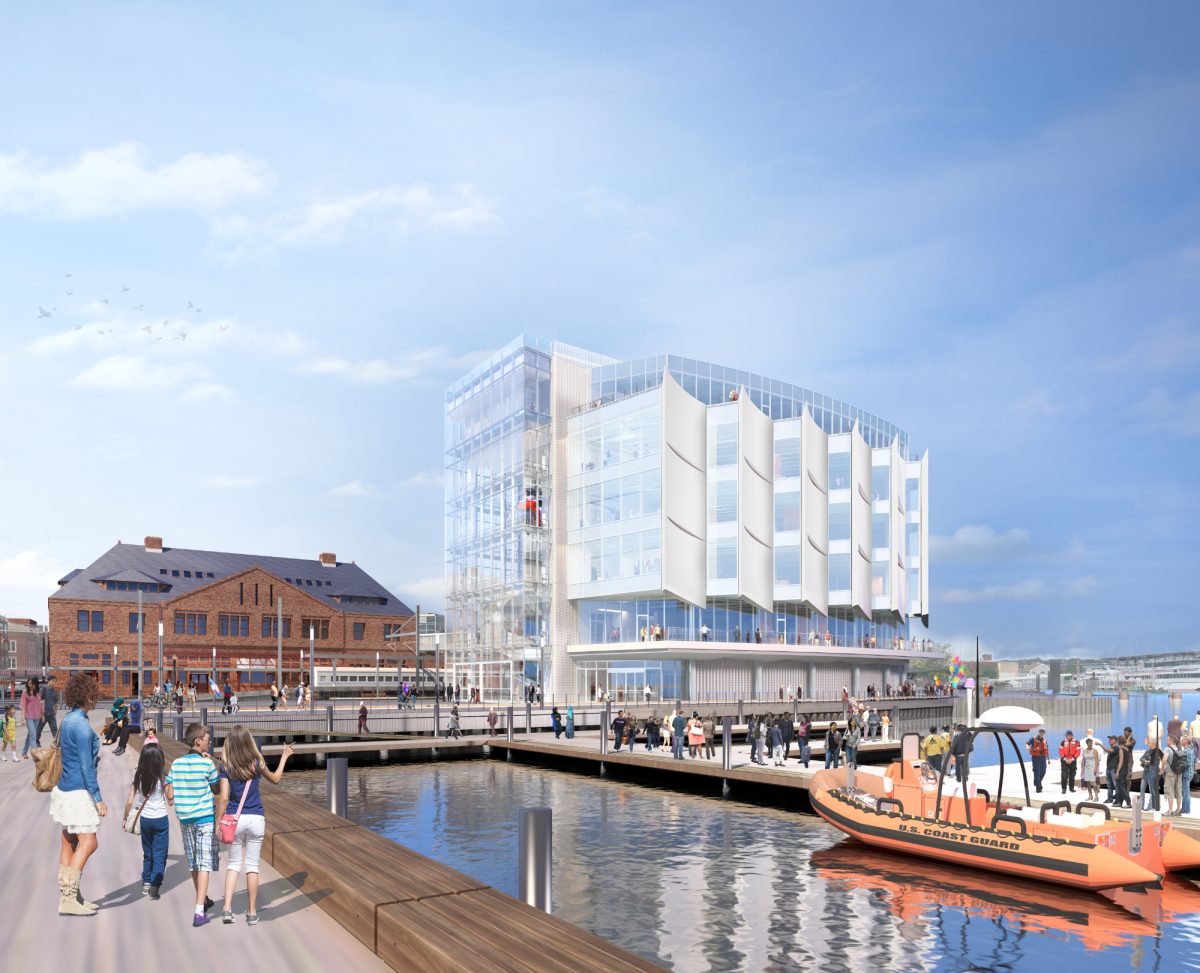Environmentally Responsible Building and Design
Leadership in Energy and Environmental Design (LEED) is a green building certification program used worldwide. NCGMA and PAYETTE anticipate a LEED “Gold” rating upon completion of the construction.

Leadership in Energy and Environmental Design (LEED) is a green building certification program used worldwide. NCGMA and PAYETTE anticipate a LEED “Gold” rating upon completion of the construction.

Leadership in Energy and Environmental Design (LEED) is a green building certification program used worldwide. Developed by the non-profit U.S. Green Building Council (USGBC), it includes a set of rating systems for the design, construction, operation, and maintenance of green buildings, homes, and neighborhoods, which aims to help building owners and operators be environmentally responsible and use resources efficiently. See the separate file which provides the actual LEED “scorecard” for the National Coast Guard Museum (NCGM) project. NCGMA and PAYETTE anticipate a LEED “Gold” rating upon completion of the construction.
The LEED process has been described as a “transformative force in the design and construction industry”. LEED is credited with providing a framework for green building, expanding the use of green practices and products in buildings, encouraging sustainable forestry, and helping professionals to consider buildings in terms of the well-being of their occupants and as part of larger systems.
NCGMA and PAYETTE ARCHITECTS started in earnest with the LEED process in the early phases of the schematic design of the museum. PAYETTE hired THE GREEN COMPANY (LEED Consultant) to guide and document the sustainability focus throughout the design phase and is assisting throughout the construction phase, as well. The following is a sample list of design areas considered throughout the design process to make the museum more sustainable and improve the overall performance of the building: siting, building orientation, daylight harvesting, material selection (recycled content), waste management (recycle), energy efficiency, high-efficiency mechanical equipment, environmentally friendly refrigerants, LED lighting, low flow plumbing fixtures, and indoor air quality to name a few. Post-construction NCGMA and the Coast Guard anticipate the use of a robust green cleaning and building performance system to keep the sustainability of the Museum complying with follow on LEED requirements.
Furthermore, PAYETTE ran several iterations of energy modeling (see separate file) to aid in selecting the optimum heating, ventilation, and cooling systems to support the building. The report is to document the anticipated compliance with LEED EA Prerequisite Minimum Energy Performance and Credit Optimize Energy Performance. Using the energy model, NCGMA worked closely with the utility provider, EVERSOURCE, to obtain a series of energy savings rebates & incentives to optimize the sustainable design of the building. Also, looking to the future, PAYETTE designed in the infrastructure necessary to install photovoltaic panels on the roof of the building.
Learn how you can be a catalyst for change, helping create the National Coast Guard Museum. Join our mailing list to stay up-to-date on building progress and support opportunities.